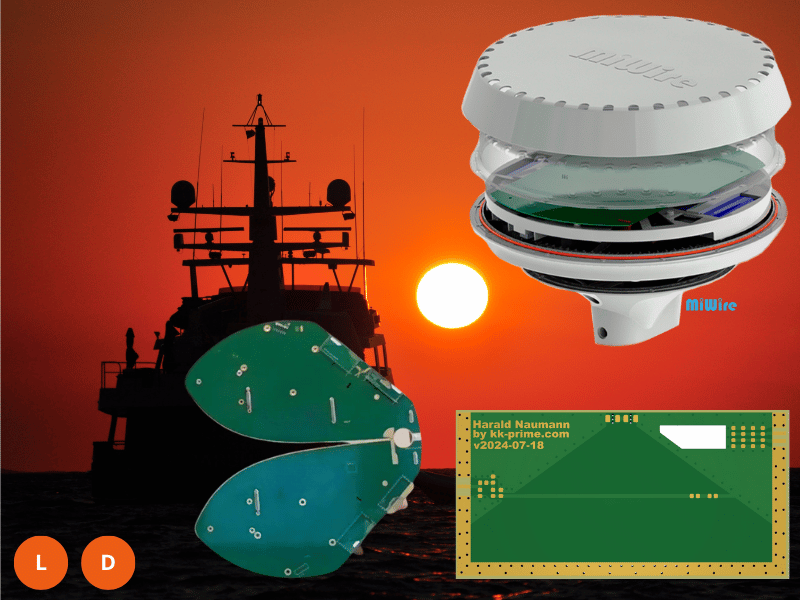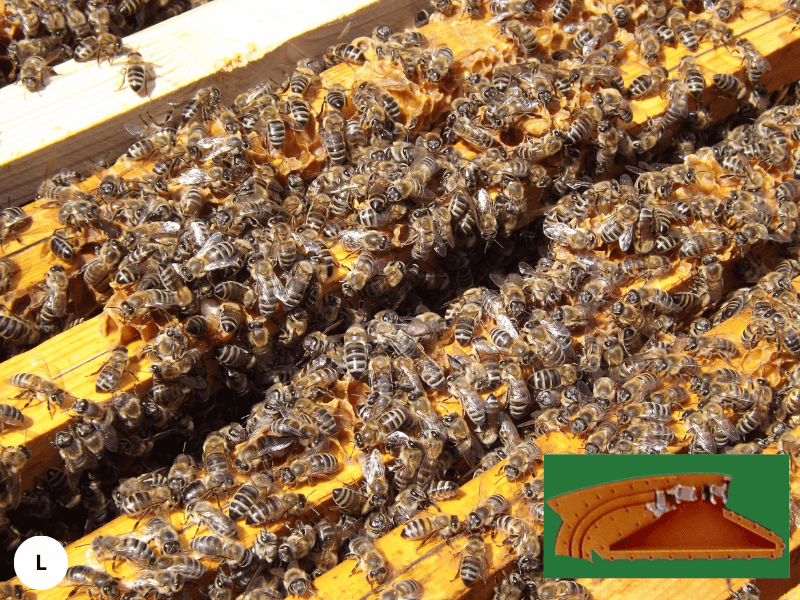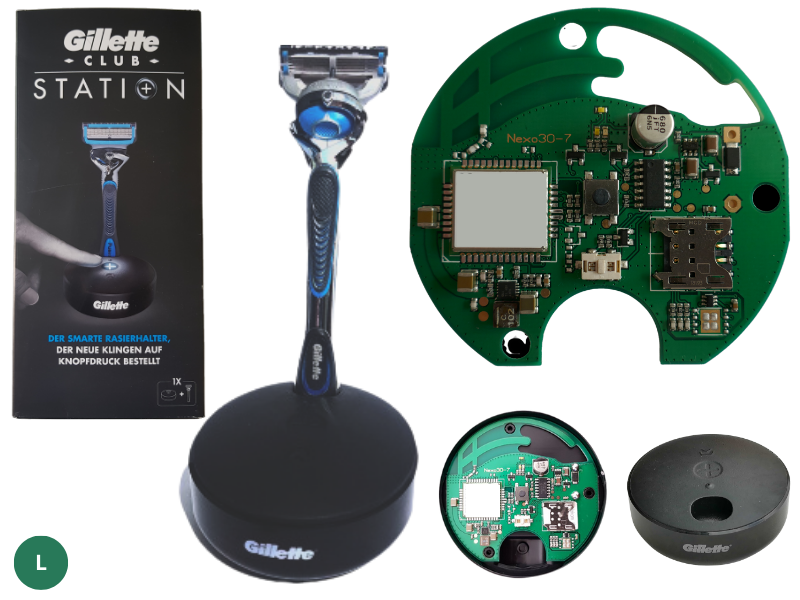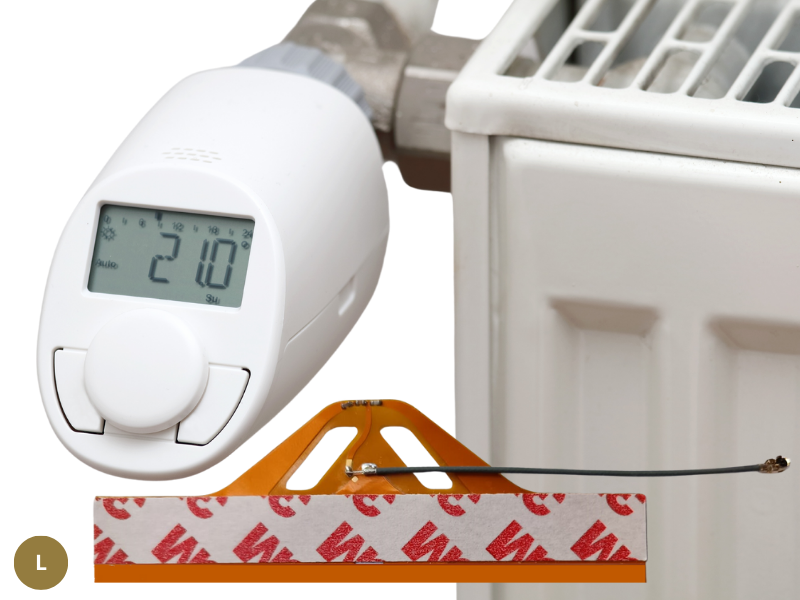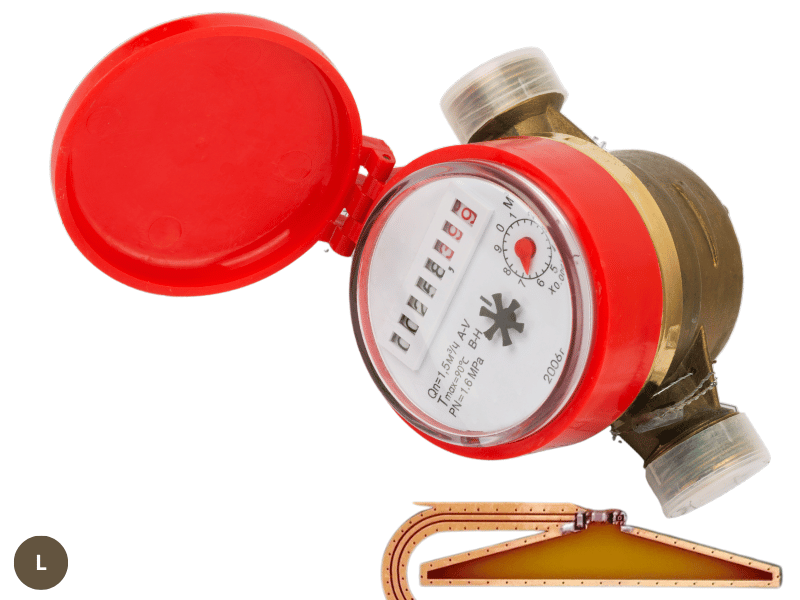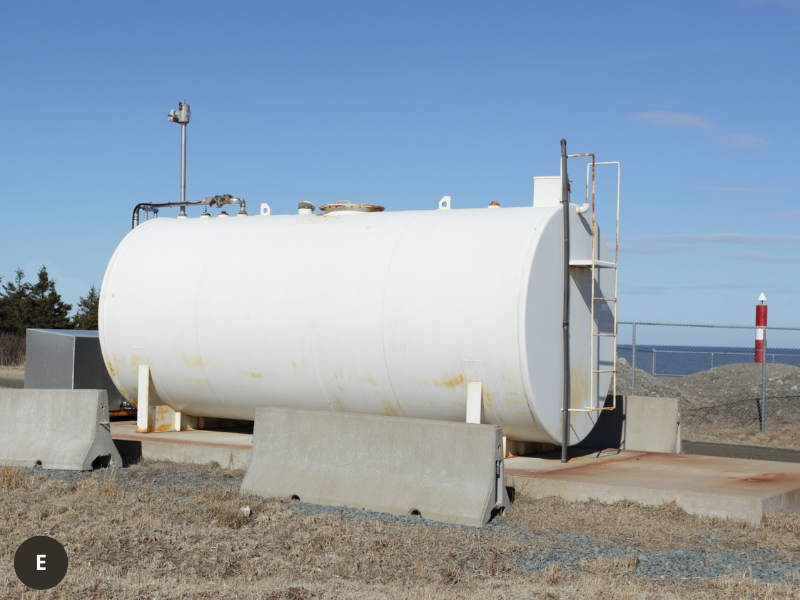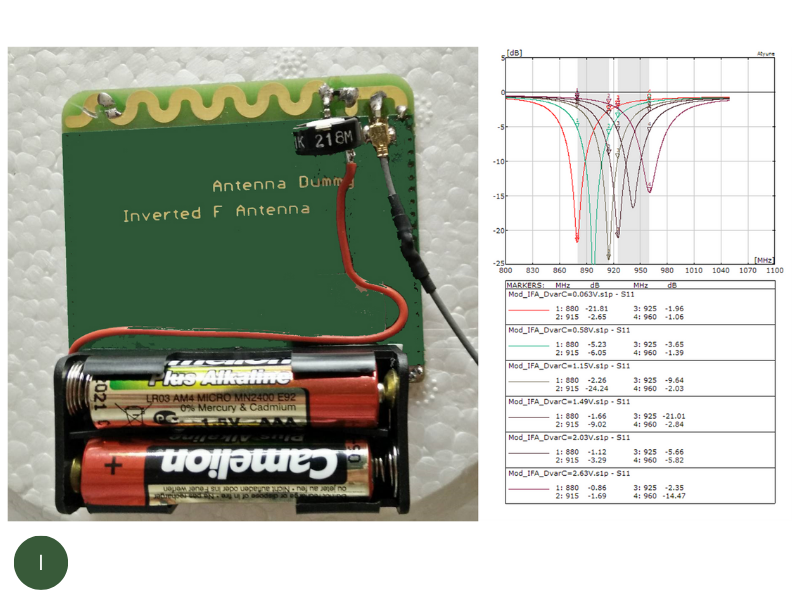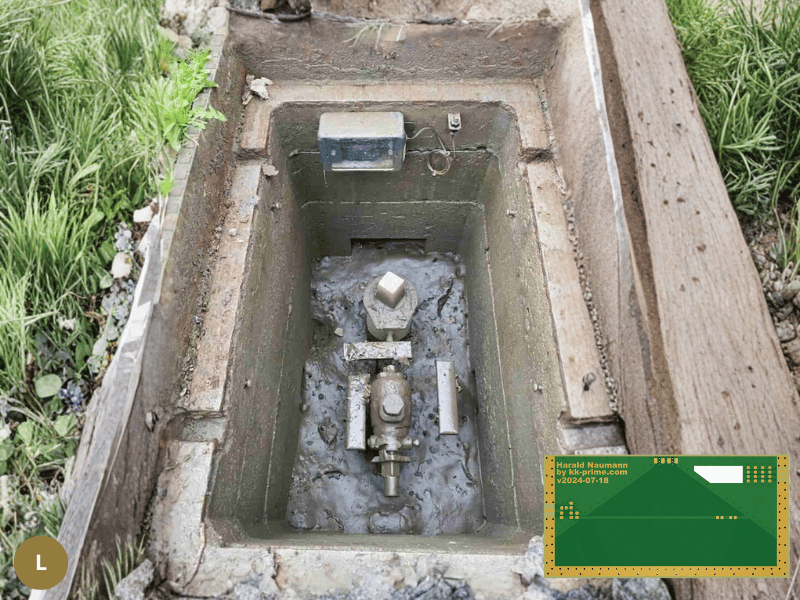Antenna Case Studies
The following projects are an excerpt of wireless IoT projects from the last few years. Most projects use licence-free electric and magnetic antennas. Some projects use circular planar antennas. At the bottom left of the pictures, you can see a letter in a circle.
L = loop antenna. P = planar antenna. I = inverted F antenna. CP = custom planar antenna. E = electric antenna.
View Case Study does not yet link to any case studies. The comprehensive texts will follow in the next few days, along with a series of measurements.
Cattle tracker on 5G NTN for Digitaninal in Spain
Digitaninal has ordered full service for its 5G NTN cattle tracker. The enclosure, antenna and PCB were developed to work together to achieve optimal antenna performance. The complete hardware was developed by our team. Digitanimal is responsible for developing the firmware. The result is the first 5G NTN device with loop antennas worldwide with optimised receiving for 5G NTN, LTE-M, NB-IoT and GNSS.
LTE solar tracker for Friedrich Telematik in Germany
Friedrich Telematik used the Antennity Cellular antenna module for the LTE solar tracker. This eliminated the development costs for the Chip Loop antenna. Only the matching of the LTE antenna to the enclosure and PCB was charged at cost. The result was up to 8 dB more antenna gain in the comparison test and improved receiving at locations with low field strength.
Bluetooth tracking for Friedrich Telematik in Germany
Friedrich Telematik has ordered a redesign of a planar linear patch antenna for Bluetooth tracking. The result is a circular patch antenna which can be put together into arrays due to its hexagonal shape. The antenna and the software on the server enable an accuracy of up to 17 cm.
Satellite pager in Europe
The IoT developer designed a pager measuring 85 mm in length. The effort required for a cellular pager operating in the 791–2500 MHz range is slightly higher. The smaller the device, the bigger the budget required.
Turnable 4G / 5G antenna for Miwire in Denmark
For this project, we optimised the directional Vivaldi antenna and the omnidirectional 4G/5G MIMO antennas in terms of their gain and bandwidth. This dual core antenna
Bluetooth antenna inside beehive in Australia
In the beehive project, a chip loop antenna intended for 2400 MHz was replaced with a $0 magnetic loop antenna sourced from Antennity. Since a tested antenna was mechanically modified to conform to the device’s curved shape, no simulation was necessary. This adjustment resulted in a significant enhancement in range and a decrease in the bill of materials (BOM).
Bluetooth sensors on heavy machinery in mines for Enganalysis in Australia
The sensors used on the machinery in the mines are covered by a lot of metal. Receiving is done primarily by reflection. The polarisation cannot therefore be determined. By exchanging the linear antenna for a circular patch antenna, the polarisation becomes meaningless. The result was a tenfold increase in range.
Order button for Gillette razor blades for Procter & Gamble in the USA
The order button for Nexolink was delivered to Procter and Gamble. Over 21,000 were produced per year. The price pressure was high. The program code ran on the GSM module. The PCB had only two layers and the GSM antenna was integrated into the PCB. The result was an IoT device that was available in the supermarket for 19 Euros including 19% VAT, razor blades and holder.
Low Cost Do It Yourself PCB Antennas for the wireless IoT
The study on low-cost PCB antennas was written for NeoCortec in Denmark. Customers often adopt antenna designs without sufficient knowledge, which often leads to errors in the design. The free 80-page A4-format study explains with extensive simulations how to successfully copy antennas..
WiFi LoRa Bluetooth Wi-Fi Hub
In this LoRa projekt, the Flex PCB antenna was replaced with a loop PCB antenna. This resulted in significantly better signal reception.
Beer keg monitoring on NB-IoT for Binarybeer in Australia
Attaching an NB-IoT sensor to a beer keg is a particular challenge in terms of mechanics and antenna. Beer kegs are made of metal, and antennas are not easy to construct when there is metal nearby. The task was solved using a simulation and then built as a functional model. The result was an increase in range and a reduction in energy consumption.
LTE-M / GNSS Pager for HK System in Germany
The LTEM / GNSS pager is used by authorities and organisations with security responsibilities in Germany. The fire brigade is alerted via the pager with a dual SIM card. In the pager, the antenna for LTE band 20 and 8 (Sub-GHz) and band 3 (1800 MHz) were set up separately and combined with a diplexer. The result was perfect receiving for LTE and GNSS.
Remote control with 868 MHz radio for Ansonic in Germany
In the remote control, an electric monopole antenna for 868 MHz was replaced by a magnetic loop antenna from Antennity. A simulation was not necessary. A proven antenna was mechanically matched to the slightly rounded device. At the end, the result was measured in three axes for antenna gain. The result was a significant increase in range and the elimination of the hand effect.
Radiator thermostat with 868 MHz for Villesto in Germany
In the radiator thermostat, an electric monopole antenna for 868 MHz was replaced by a magnetic Antennity Loop antenna on a flex PCB with a cable. The proven Antennity antenna shape was transferred to a flex PCB. The result was a significant increase in range.
GNSS dual-band construction site lights for CM1 in Germany
The construction site lights require high-precision positioning in order to offer a range of services. In this project, an existing GNSS antenna was replaced with a different one. The result is a significantly more accurate determination of the position without changing the enclosure and the main PCB.
Water meter in Denmark
The water meter’s electrical monopol antenna was replaced with a magnetic Antennity Loop antenna. The range was improved. At the same time, the Antennity antenna shape was constructed so that the water meter could be manufactured in a version with 433 and 868 MHz by simply changing the parts.
Water monitoring Generation 2 with Kallipr in Australia
The Antennity team was closely involved in the project from the design stage of the new water monitor. This allowed us to provide early advice on which antenna concept and installation location would achieve the best antenna performance. The result is a good TRP and a reduction in energy consumption.
LoRaWAN sensor for use in Europe and the USA
In this project, we are allowed to show and explain the PCB, but we are not allowed to name the customer. The original L antenna had a short range and could not cover 868 and 915 MHz. The L antenna was replaced by an inverted F antenna with capacitive switching. The result was a significant increase in range and the antenna now works for 868 and 915 MHz.
Cellular sensor for containers for Smartbin in Ireland
The sensor had problems with energy consumption. Sending the GPRS module with 2 watts of flow results in a peak current of 2 amperes. This led to a power-down reset. The default for the module was GPRS class 10 and 2 peaks with 2 amperes in succession and 500 mA on average. With the change to GPRS class 8, 1 peak is still used. The average current has thus been reduced to 250 mA and no reset is triggered.
Sigfox / LoRaWAN sensor for Smartbin in Ireland
Smartbin specialises in level sensors for various containers. In this project, we replaced an expensive helix antenna on the PCB with an inexpensive PCB antenna with a switch for 868/915 MHz. The result was an antenna with a long range and a switch for 868 and 915 MHz.
Eldery care sensor with infrared sensor on GSM and WiFi
In this eldery care sensor, the cellular chip antenna was replaced with a flex PCB antenna with coax. This resulted in significantly better signal reception.
Globalstar / GPS tracker for FindMe in Norway
FindMe faced a pricing challenge with two ceramic patch antennas for Globalstar and GPS. We resolved this issue by implementing a single classic IFA antenna for both bands, along with an RF switch. The outcome was a cost-effective PCB track antenna instead of two separate ceramic patch antennas,
Bluetooth tag for customer
in USA
In the Bluetooth tag, a chip loop antenna designed for 2400 MHz was substituted with a $0 magnetic loop antenna from Antennity. No simulation was required, as a tested antenna was mechanically adapted to fit the curved device. This change led to a notable improvement in range and a reduction in the bill of materials (BOM).
Low cost PCB track antenna for NeoCortec
Our mission was to create compact, open-source PCB trace antennas that deliver outstanding performance at minimal cost. We are proud to have achieved 100% efficiency for 868/915 MHz antennas with completely eliminating the need for any matching circuit components.
Pet tracker reference design on 5G NTN, NB-IoT and LTE-M
Antennity’s Pet Tracker reference design is the world’s first pet tracker with an intelligently controlled frame antenna that, like smart phones, is dynamically tuned to frequency ranges from 690 to 2700 MHz via the MIPI RFFE bus. The compact solution combines NB-IoT, LTE-M, 5G NTN, GNSS and Bluetooth in a small, powerful device with open hardware and software support for easy development and integration.
Optimisation of gesture control for ASM Syncrotec
An inverted F antenna (IFA) at 2.4 GHz was used to improve performance in confined spaces and material-intensive environments. The improved antenna structure and precise matching increased the range fourfold and sensitivity by 15 dB, while reducing harmonics and ensuring a stable radio connection even behind non-conductive control elements.
Eldery care sensor with infrared sensor on GSM and WiFi
In this eldery care sensor, the cellular chip antenna was replaced with a flex PCB antenna with coax. This resulted in significantly better signal reception.



